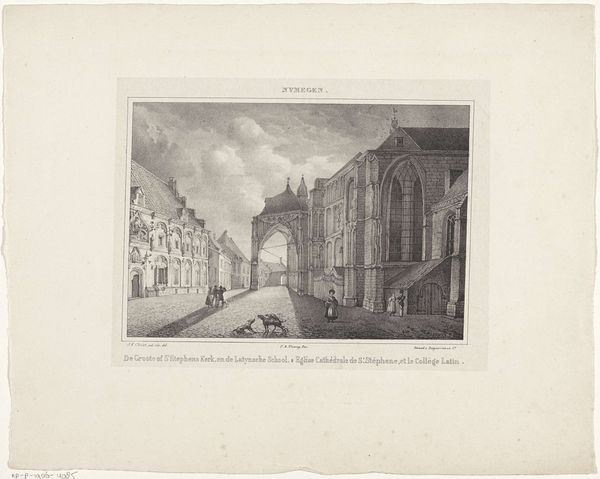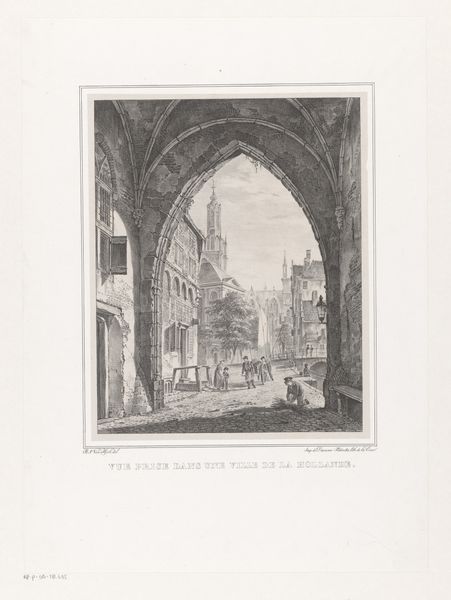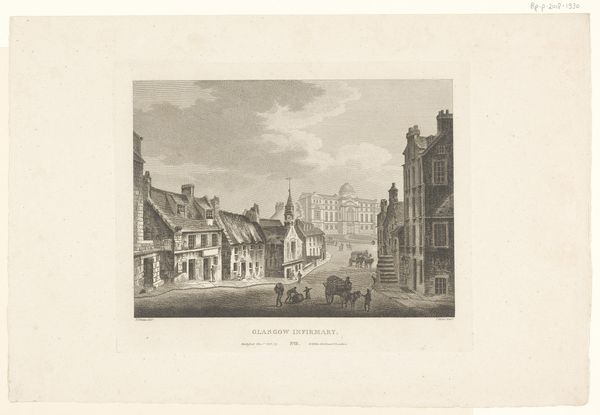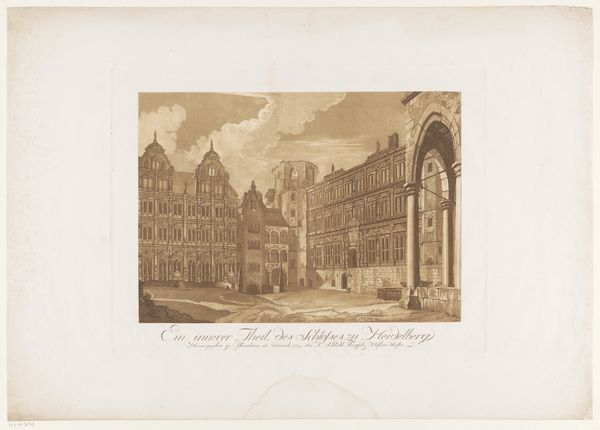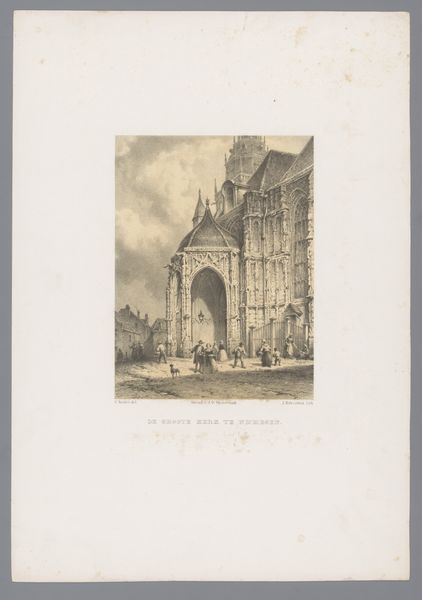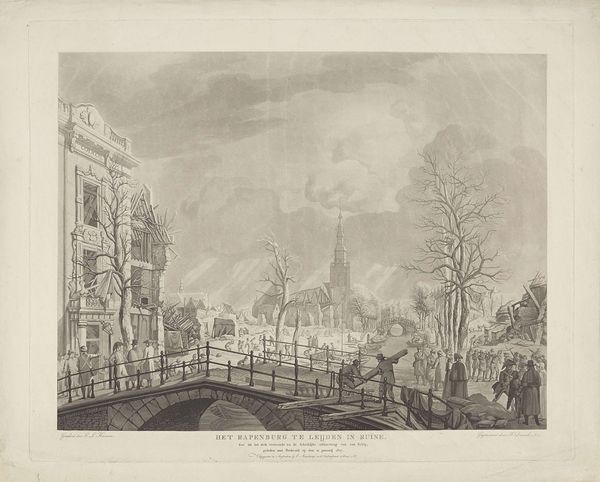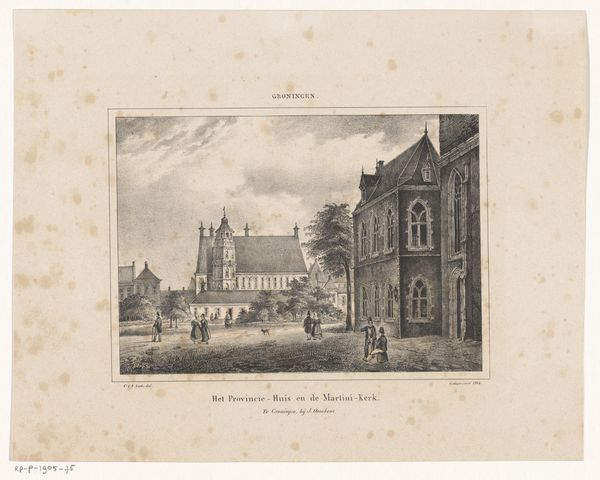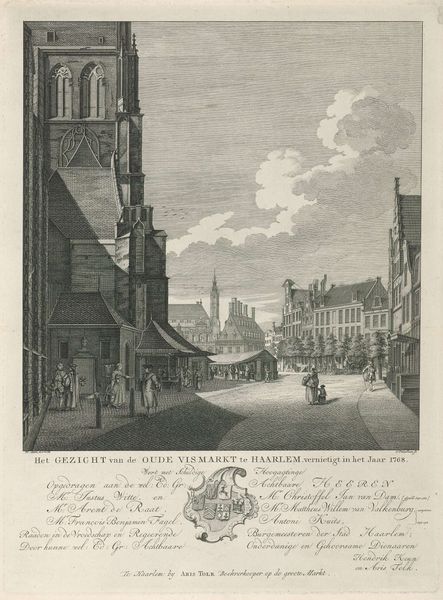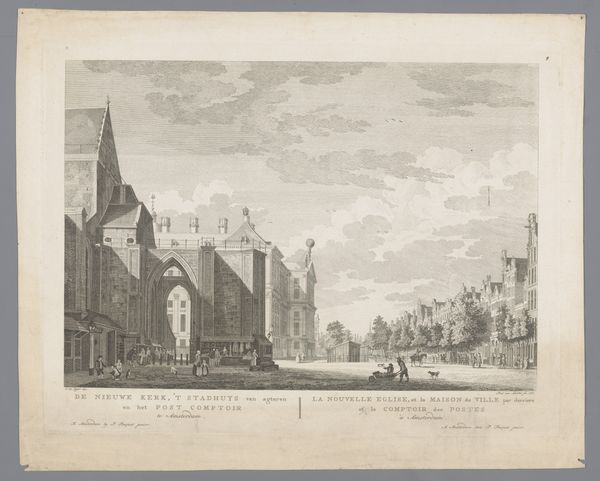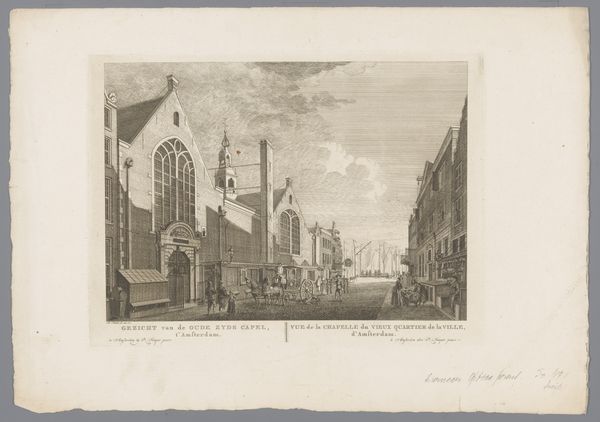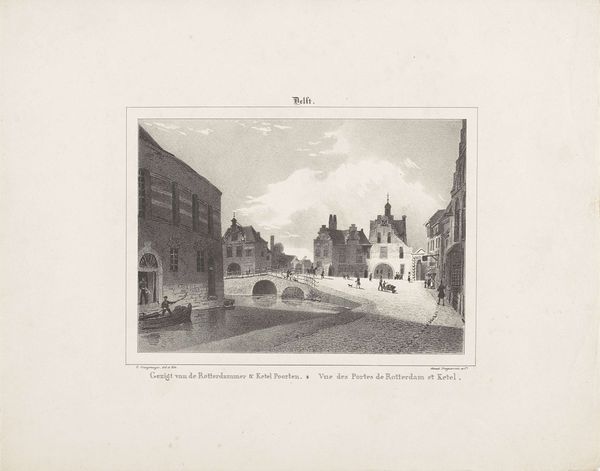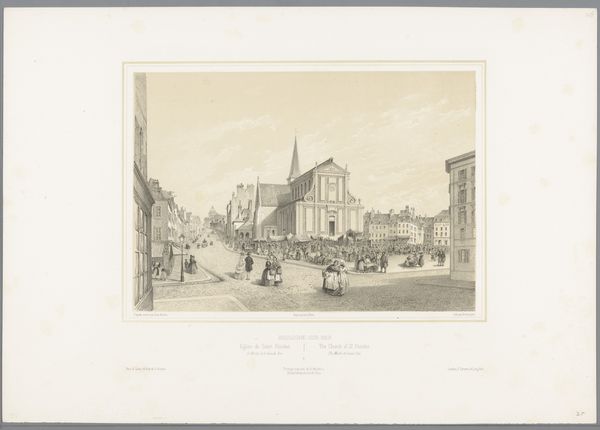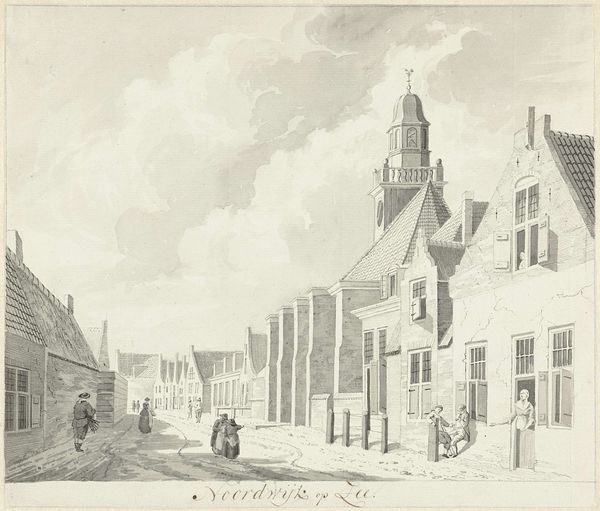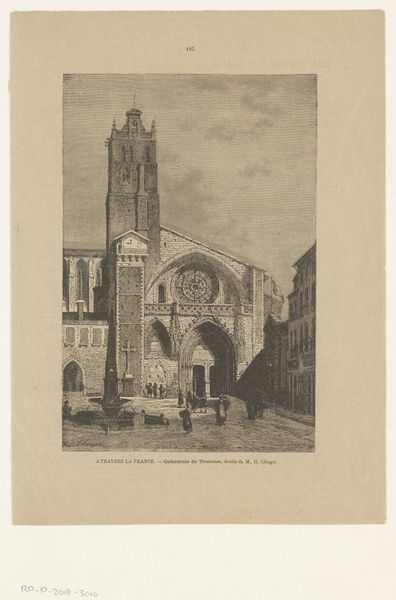
Gezicht op de Stevenskerk en de Latijnse School in Nijmegen 1809 - 1845
0:00
0:00
print, etching
#
neoclacissism
# print
#
etching
#
landscape
#
romanticism
#
cityscape
Dimensions: height 250 mm, width 330 mm
Copyright: Rijks Museum: Open Domain
Curator: Here we have "View of the Stevenskerk and the Latin School in Nijmegen," created by Johannes Franciscus Christ sometime between 1809 and 1845. It’s currently held in the Rijksmuseum collection. What are your initial impressions? Editor: The architectural lines create such a stark, almost severe, order, softened slightly by the subtle coloring. The perspective, angling into the distance, evokes a kind of classical serenity despite the somewhat ominous tones. Curator: It's fascinating how this etching reflects both Neoclassical ideals and a burgeoning sense of Romanticism. The symmetrical composition aligns with the Neoclassical interest in order, but the dramatic sky hints at a Romantic sensibility. Consider, too, Nijmegen's strategic importance and the weight that history carries within these buildings. The Latin School, in particular, would have been an elite institution, shaping the minds of future leaders. Editor: Right. Focusing on purely formal elements, the contrasts between the precise geometry of the architecture and the soft washes of color give the image an intriguing tension. The archway acts as a visual bridge—or maybe a frame—that draws the eye deeper into the cityscape. Curator: Precisely! This piece offers a glimpse into the socio-political structures of the time. Who had access to education? Who benefited from these institutions? The figures within the cityscape, though small, play a role in articulating social divisions within Nijmegen at that time. We might even analyze how women, seemingly relegated to the edges of the image, held certain positions within those bounds. Editor: The tonal gradations work subtly to highlight the subjects as they fade into shadow. The contrast between light and shadow also gives depth to the buildings and their structures. It is about how light constructs reality and conveys not only atmosphere, but something beyond literal transcription. Curator: Absolutely. And what appears at first glance as a straightforward architectural study can be interpreted through a lens of power, knowledge, and social stratification. This work not only showcases a specific locale but invites critical engagement with history. Editor: Ultimately, the artwork is quite simple, even as the social aspects add a very relevant level of discussion to the setting.
Comments
No comments
Be the first to comment and join the conversation on the ultimate creative platform.
